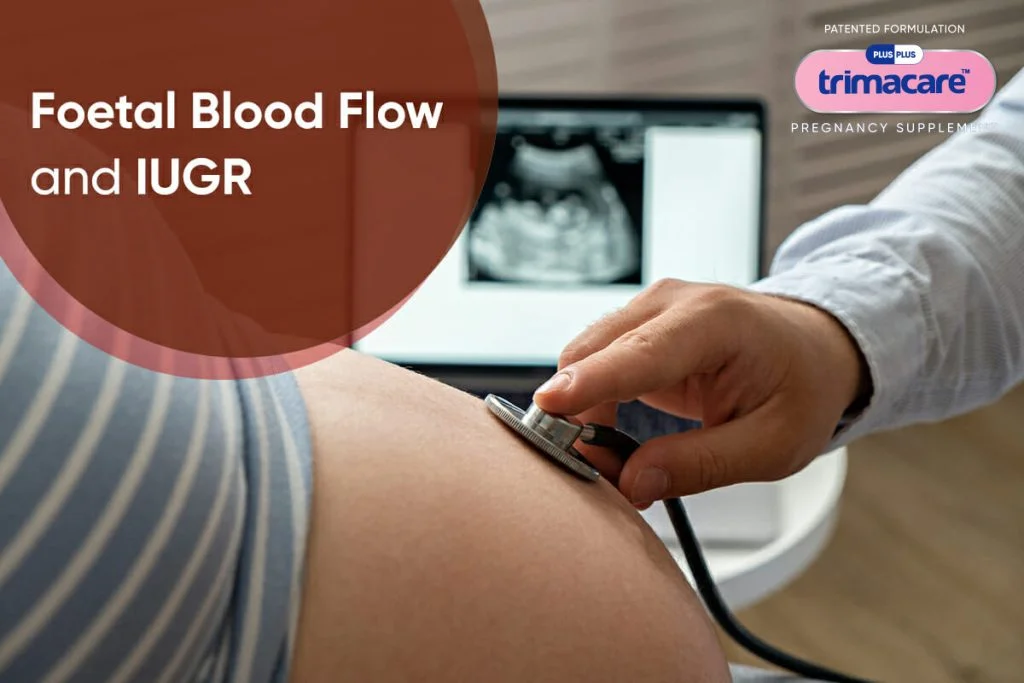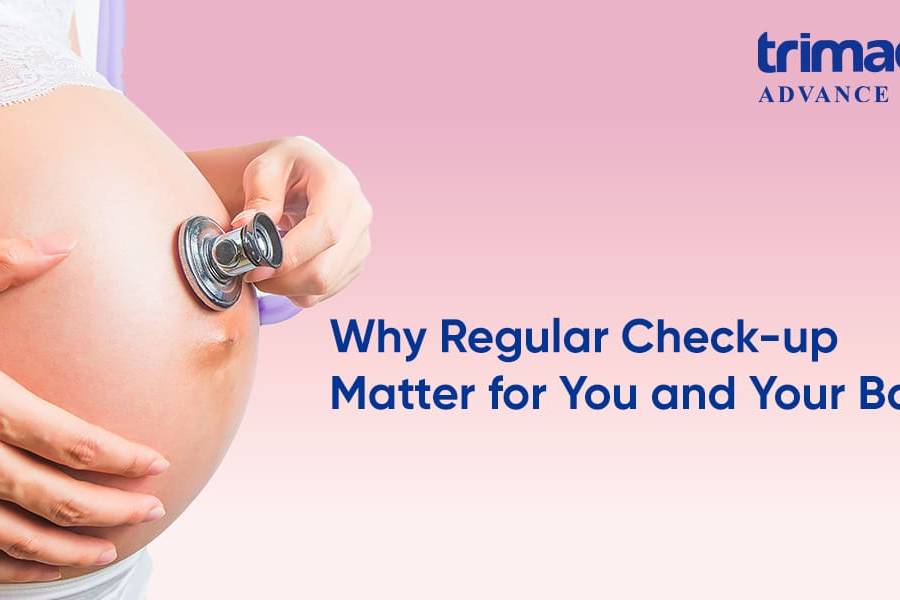A growing foetus depends completely upon the pregnant mother for all the needs. The mother supplies all the foetus’ requirements with special mechanisms that develop during pregnancy.
Circulatory System of the Foetus
The placenta is a temporary organ that develops during pregnancy and allows the baby to get nourishment, oxygen, and the removal of waste products. The placenta is connected to the mother and the baby with an umbilical cord. The fetal heart contains chambers and valves similar to an adult, but since the lungs cannot be used till the baby is born, the foetal heart follows a different mechanism that allows the blood to bypass the lungs and get oxygenated via the mother’s circulatory system.
- The oxygen and the nutrients get transferred to the foetus from the mother through the umbilical cord.
- The oxygenated blood from the mother flows through the umbilical vein to the baby’s liver, moving through a shunt called “Ductus Venosus”.
- Some of the blood goes to the liver, and most of the oxygenated blood goes to the inferior vena cava (A large blood vessel) and into the right atrium of the heart (The upper chamber of the heart).
- The blood flows across to the left atrium through a shunt called foramen ovale (A hole between the right atrium and the left atrium, the upper chambers of the heart).
- From the left atrium, the blood goes to the left ventricle (lower chamber of the heart) and is pumped into the ascending aorta ( A large artery coming from the heart). From the ascending aorta, the blood is sent to the brain, heart muscles, and lower body.
- The deoxygenated blood from the foetus containing carbon dioxide enters the right atrium and flows to the right ventricle. From here, it flows through the ductus arteriosus into descending aorta that is connected to the umbilical arteries (Instead of going to the lungs to get oxygenated, as the function of oxygenation of the blood is being performed by the mother for the foetus before birth). The blood flows back into the placenta where the carbon dioxide and the waste products are released into the mother’s circulatory system. The oxygenated blood and nutrients are transferred to the placenta from the mother, and this cycle continues till the baby’s birth. At birth, the umbilical cord of the baby is clamped after which the baby is unable to receive the nutrition and oxygen from the mother’s circulatory system. As the baby takes the first breaths of air after birth, the lungs expand, and the ductus arteriosus and the foramen ovale close. The baby’s circulatory system and the heart now work as an adult’s.
Intra-Uterine Growth Restriction (IUGR)
Intrauterine Growth Restriction (IUGR) is a pregnancy complication characterized by the inadequate growth and development of the fetus. It is more commonly observed in developing countries and is associated with increased risks of morbidity and mortality. In IUGR, the fetus is smaller or less developed than expected for its gestational age and gender, with a fetal weight below the 10th percentile estimated through ultrasound. If a baby’s birth weight is less than 2,500g, it is considered as having IUGR.
IUGR is categorized into two types:
- Symmetric or Primary IUGR: In this type, all the internal organs of the baby are proportionally reduced in size.
- Asymmetric or Secondary IUGR: Here, the head and brain of the baby are normal in size, while the abdomen appears smaller in relation to the rest of the body.
Understanding the type of IUGR is important in determining the underlying causes and implementing appropriate management strategies. Regular monitoring and medical intervention are essential to optimize the health outcomes for both the mother and the baby.
Causes of IUGR
There can be several causes of intrauterine growth restriction (IUGR), which can be attributed to maternal, uterine and placental, as well as fetal factors.
Maternal Causes:
- Before Pregnancy: Maternal factors before pregnancy, such as low pre-pregnancy weight, small maternal size, poor nutritional status prior to conception, low socioeconomic status, and a history of no or more than 5 previous births and recent pregnancies, can increase the risk of IUGR.
- During Pregnancy: Factors during pregnancy that may contribute to IUGR include inadequate weight gain, engaging in physically demanding work, chronic illnesses, alcohol consumption, drug abuse, smoking, pregnancy-induced hypertension, and reduced availability of oxygen.
Uterine and Placental Factors:
- Inadequate Placental Growth: Insufficient development of the placenta can restrict the supply of nutrients and oxygen to the fetus, leading to IUGR.
- Uterine Malformations: Structural abnormalities of the uterus can affect fetal growth and development.
- Decreased Uteroplacental Blood Flow: Reduced blood flow to the placenta can impair the delivery of essential nutrients to the fetus, contributing to IUGR.
- Multiple Gestations: Carrying multiple fetuses increases the demands on the placenta, which can result in IUGR.
Fetal Causes:
- Familial Genetic and Chromosomal Abnormalities: Inherited genetic conditions or chromosomal abnormalities can interfere with normal fetal growth.
- Intrauterine Infections: Infections contracted by the fetus during pregnancy can disrupt growth and development, potentially leading to IUGR.
It’s important for healthcare professionals to identify the underlying causes of IUGR to provide appropriate management and care for the well-being of both the mother and the baby.
Diagnosis of IUGR
The diagnosis of intrauterine growth restriction (IUGR) involves various methods that the gynecologist may utilize:
- Fundal Height Measurement: The gynecologist measures the height of the uterus (fundal height) to estimate the gestational age. If there is a significant difference of 4cm or more between the measured fundal height and the expected size for the gestational age, it may indicate IUGR.
- Weight Monitoring: Monitoring the mother’s weight throughout pregnancy is important. If the weight gain is lower than expected or not occurring as anticipated, it could be a sign of fetal growth problems.
- Ultrasound Examination: An ultrasound scan can be performed to assess the baby’s growth and estimate their weight. Measurements of the baby’s head and abdomen are compared to growth charts to determine if the baby is smaller than expected. Additionally, the amniotic fluid levels can be evaluated during the ultrasound.
- Doppler Assessment: Doppler assessment involves using sound waves to assess blood flow through blood vessels. By examining the blood flow in the umbilical cord and the baby’s brain, doctors can identify any abnormalities in blood circulation. An abnormal Doppler test may indicate IUGR.
These diagnostic methods help healthcare professionals identify and monitor the growth of the baby, allowing them to provide appropriate care and management for both the mother and the baby.
Management of IUGR
When Intrauterine Growth Restriction (IUGR) is diagnosed, the health of both the mother and the fetus is closely monitored. The gynecologist may recommend various treatments depending on the maternal condition, such as managing any underlying diseases, ensuring good nutrition, and advising bed rest if necessary. In cases where the fetus demonstrates abnormal function, preterm delivery might be necessary.
During delivery, it is crucial to closely monitor the well-being of the fetus, and it is recommended to give birth at a healthcare center that is equipped to handle both obstetric and neonatal emergencies. This ensures that appropriate medical support and interventions can be provided promptly, if needed. Prioritizing the safety and well-being of both the mother and the baby is of utmost importance in cases of IUGR.
Complications of IUGR
Intrauterine Growth Restriction (IUGR) can give rise to several complications throughout pregnancy, delivery, and after birth. Some of these complications include:
- Difficulty in Vaginal Delivery: Due to the smaller size and reduced growth of the fetus, vaginal delivery may become more challenging.
- Low APGAR Score: The APGAR score, which assesses the newborn’s overall health immediately after birth, may be lower in cases of IUGR.
- Meconium Aspiration: IUGR can lead to the passage of stools (meconium) by the baby while still in the uterus. Inhalation of these stools during birth can result in respiratory problems.
- Low Birth Weight: Babies affected by IUGR often have a significantly lower birth weight than average, which can pose health risks and necessitate special care.
- Hypoglycemia (Low Blood Sugar): IUGR babies may experience low blood sugar levels, requiring monitoring and intervention to maintain adequate glucose levels.
- High Red Blood Cell Count: In response to the reduced oxygen supply, the fetus may produce more red blood cells, leading to a high red blood cell count. This can increase the risk of complications such as blood clot formation.
- Low Resistance to Infections: IUGR babies may have a weakened immune system, making them more susceptible to infections.
- Difficulty in Maintaining Body Temperature: The reduced body fat and muscle mass in IUGR infants can make it challenging for them to regulate their body temperature effectively.
It is crucial for healthcare professionals to closely monitor and manage these potential complications associated with IUGR to ensure the well-being and optimal outcomes for both the mother and the baby.
Prevention of IUGR
IUGR can be prevented by taking some measures before pregnancy, during pregnancy, and during delivery.
- Before Pregnancy – The measures that can be taken before pregnancy to reduce the risk of IUGR include inter-conception care (The care of the mother’s health between pregnancies), healthy eating, improving exercise and activity to improve weight and cardiovascular health. Diagnosing and managing chronic diseases such as hypertension and diabetes before pregnancy can also help prevent IUGR. Treatment of anemia and supplementing folic acid can also reduce the likelihood of IUGR.
- During Pregnancy – Pregnant mothers should get frequent antenatal check-ups as recommended by their doctor. Women should not consume any medications without the prescription of a doctor. Emphasis should be on eating healthy, consuming all the necessary nutrients during pregnancy, following a healthy lifestyle, and staying away from alcohol consumption, drug use, and smoking. Pregnant women should also get adequate rest. The health of the pregnant woman must be prioritized during this crucial period of pregnancy.
- During Delivery – The baby should be delivered in a healthcare facility equipped to handle neonatal as well as obstetric emergencies.
Your doctor would be closely monitoring the development of the foetus through the pregnancy, so make sure that you are regular with your consultations with the gynecologist. Follow your gynecologist’s instructions and take prenatal supplements as prescribed. Avoid consuming foods and drinks detrimental to the health and focus on nutritious foods. Your habits also influence the health of the baby, so make it a point to watch your routine, habits, and actions. Pregnancy is a crucial period that would determine your baby’s health in the future.
Take Away
It is important to be regular with antenatal check-ups and follow your doctor’s recommendations very thoroughly. A routine that benefits your health benefits the health of your baby. Always prioritize your diet and talk to your doctor about prenatal supplementation if your diet seems inadequate in nutrients. The doctors also recommend pregnant women to take prenatal vitamins along with a nutrient-dense to avoid deficiency of essential nutrients. Take care of yourself and try to follow a lifestyle that is conducive to your optimal health, allowing your baby to reach the full potential. Only a healthy mother can give birth to a healthy baby, so ensure that you are prioritizing yourself.
Frequently Asked Questions:
1. What is IUGR in pregnancy?
IUGR represents Intrauterine Development Limitation. It alludes to a condition where a baby doesn’t develop at the normal rate during pregnancy.
2. What causes IUGR in a fetus?
IUGR can be caused by different factors, for example, placental issues, maternal medical problems (like hypertension or diabetes), hereditary elements, contaminations, or way of life factors, for example, smoking or medication use.
3. How is IUGR diagnosed during pregnancy?
IUGR can be analysed through routine pre-birth screenings, for example, ultrasound examines, estimating fundal level, and checking fetal pulse and development. If the fetus is found to be smaller than expected for its gestational age, the diagnosis is confirmed.
4. What are the risks associated with IUGR for the fetus?
An increased risk of stillbirth, low birth weight, developmental delays, and IUGR-related complications can affect the fetus. The baby’s long-term health and development may also be affected.
5. Can IUGR be treated during pregnancy?
The treatment for IUGR focuses on keeping a close eye on the pregnancy to manage any problems and help the baby grow. This could mean more care during pregnancy, changes to one’s lifestyle, medication, or, in severe cases, an early birth.
A Certified Nutritionist with a rich healthcare background in health journalism, the author has immense experience in curating reader-friendly, engaging, and informative healthcare blogs to empower readers to make informed pregnancy-related decisions.













